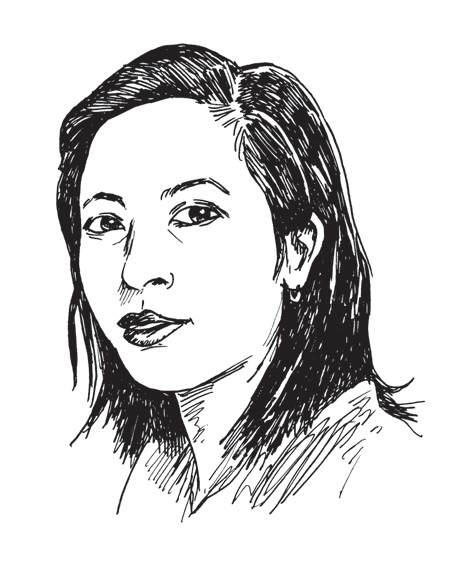From 2012 to October 2017, Angela Dimayuga (b. 1985, San Jose, California) was executive chef at Mission Chinese Food, a Szechuan restaurant started by chef Danny Bowien. Founded in San Francisco, it would be brought to maturity in New York, and, early on, Dimayuga’s vision established the restaurant as one of New York’s premier dining rooms. With Mission’s version of Chinese food, she sought a debauched nostalgia, riffing on tradition with an almost cyberpunk sensibility.
Dimayuga is driven by a deep inquisitiveness, fueled as much by New York as by forward-thinking food science. She has taken on collaborations with artists (notably Anicka Yi) and fashion labels (including Eckhaus Latta). The restaurant’s menu numbers fifty-plus items, though this interview was inspired by an off-menu dessert that has haunted the lineup since it was conceived for the latest location, in 2015. Called simply Shave Ice, it comprises shaved ice flavored with seasonal fruit puree, dished over cottage-cheese ice cream and wheat germ, and the server unceremoniously dumps Pop Rocks onto the concoction tableside. Though seemingly assembled from items found at your corner bodega, it nonetheless achieves the same sweet-sour buzzing sensation that characterizes traditional Szechuan cuisine. Taken together with the restaurant’s lounge-like atmosphere (also the product of Dimayuga’s vision), the entire experience instills a seductive and disorienting tension—the score for Twin Peaks is even piped into the bathrooms.
Though she’s moved on from Mission Chinese, her impact is already noticeable in New York. Hers was an integral voice of resistance in 2017, speaking out about sexual harassment in the restaurant industry, and making bold the stakes for queer people of color when she responded to an interview request from ivankatrump.com, writing, “As a queer person of color and daughter of immigrant parents, I’m not interested in being profiled as an aspirational figure for those that support a brand and President that slyly disparages female empowerment. Sharing my story with a brand and family that silences our same voices is futile.”
—Sam Korman
Shave Ice
THE BELIEVER: A lot of your dishes have a heavy focus on ingredients, but some are not what you’d expect at a Szechuan place. They’re more evocative. We’ve agreed to talk about Shave Ice, a dish that seems to frame the entire menu. Its complex operation lets the Pop Rocks stand in for Szechuan peppercorns.
ANGELA DIMAYUGA: Mission Chinese’s style of cooking is really bold, really spicy, really fatty. It’s fun, but it made certain dishes inaccessible and excluded some people. The first thing that I put on the menu was cabbage salad. The ingredients are cabbage, miso, anchovy, tahini, soy. It’s a cooling dish next to the Chongqing Chicken Wings, which are the...
You have reached your article limit
Sign up for a digital subscription and continue reading all new issues, plus our entire archives, for just $1.50/month.
Already a subscriber? Sign in





